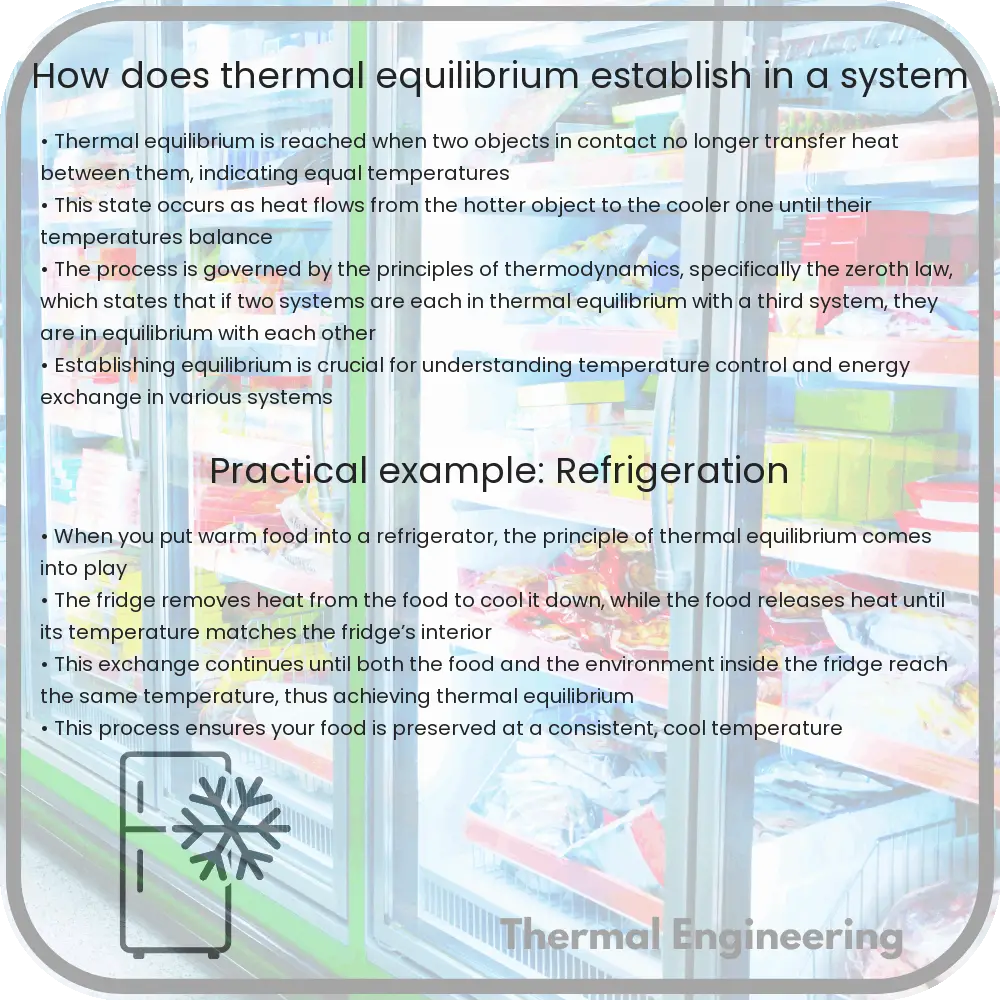Learn about thermal equilibrium, a fundamental concept in thermodynamics where objects or systems reach equal temperatures with no net heat flow.

Understanding Thermal Equilibrium
Thermal equilibrium is a key concept in thermodynamics, dealing with the distribution and balance of temperature in different objects or systems. When two objects or systems come into contact, they exchange energy until they reach a state where their temperatures are equal, and no net heat flow occurs between them. This state is known as thermal equilibrium. In this article, we will explore the process through which thermal equilibrium is established.
How Thermal Equilibrium is Achieved
When discussing thermal equilibrium, it’s important to understand heat transfer and the laws of thermodynamics that govern it. Heat transfer can occur in three primary ways: conduction, convection, and radiation. Each plays a role in achieving thermal equilibrium depending on the conditions and materials involved.
- Conduction: This is the transfer of heat through a solid material when there is a temperature gradient. Heat flows from the warmer to the cooler area until temperatures equalize.
- Convection: This method involves the movement of heat by the physical movement of fluids (liquids or gases). Warmer parts of a fluid rise, while cooler parts sink, creating a heat transfer cycle until equilibrium.
- Radiation: Heat transfer occurs through electromagnetic waves and doesn’t require a medium (like air or water). Any object with a temperature above absolute zero emits radiation.
The Zeroth Law of Thermodynamics
The concept of thermal equilibrium is fundamentally rooted in the Zeroth Law of Thermodynamics, which states:
“If two systems are in thermal equilibrium separately with a third system, then they must be in thermal equilibrium with each other.
This law implies that thermal equilibrium is transitive and helps define temperature as a fundamental and measurable property of matter.
Quantitative Aspects of Thermal Equilibrium
At the microscopic level, thermal equilibrium involves a balance in the distribution of the kinetic energies of particles within systems. According to the kinetic theory of gases, temperature is a measure of the average kinetic energy of the particles in a substance. When two bodies are at different temperatures and are brought into contact, the kinetic energies of the particles are redistributed through collisions until equilibrium is reached.
The mathematical representation of heat transfer, particularly in conduction, can be expressed using Fourier’s Law:
Q = -k * A * (dT/dx)
Where:
Qis the heat transfer rate,kis the thermal conductivity of the material,Ais the cross-sectional area through which heat is transferred,dT/dxis the temperature gradient.
Applications and Importance
Achieving thermal equilibrium is crucial in a variety of engineering applications, including:
- Thermal management in electronics: where devices are designed to reach equilibrium swiftly to prevent overheating.
- HVAC systems: which maintain environmental conditions at equilibrium for comfort and safety.
- Material processing: such as annealing, where controlled heating and cooling cycles bring materials to thermal equilibrium to improve their properties.
Understanding and controlling thermal equilibrium is not only fundamental for maintaining the efficiency and longevity of equipment but also for enhancing the comfort and safety of living environments.
Conclusion
Thermal equilibrium plays a pivotal role in everyday phenomena and technologies, from the simple act of ice melting in a drink to sophisticated thermal management systems in spacecraft. By studying how equilibrium is established, we gain insights into managing and optimizing various systems for better performance and sustainability.